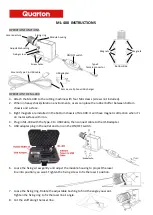
RID16
Operating the field indicator
Hauser
21
a0011300-en
Fig. 14:
System integration via FOUNDATION Fieldbus™
HSE = High Speed Ethernet, H1 = FOUNDATION Fieldbus-H1
The following system connection options are possible:
– A linking device can be used to connect to higher ranking fieldbus protocols (e.g. to the High Speed
Ethernet - HSE) (Control Net)
– A H1 card is required for direct connection to a process control system.
– System inputs are available directly for H1 (HSE).
The system architecture of the FOUNDATION Fieldbus™ can be divided into two
subnetworks:
H1 bus system:
In the field, fieldbus devices are connected only via the slower H1 bus system that is specified
following IEC 61158-2. The H1 bus system allows simultaneous feed to the field devices and data
transfer on the two-wire line.
The following points describe some important characteristics of the H1 bus system:
• All fieldbus devices are powered via the H1 bus. Like the fieldbus devices, the power supply is
connected in parallel to the bus line. Devices requiring external power must use a separate power
supply.
• One of the most common network structures is the line structure. Star, tree or mixed network
structures are also possible using connecting components (junction boxes).
• The bus connection to the individual fieldbus devices is achieved by means of a T-connector or
via a spur. This has the advantage that individual fieldbus devices can be connected or
disconnected without interrupting the bus or the bus communication.
• The number of connected fieldbus devices depends on various factors, such as use in hazardous
areas, length of spur, cable types, current consumption of field devices etc. (see
15).
• If using fieldbus devices in a hazardous area, the H1 bus must be equipped with an intrinsically
safe barrier before the transition to the hazardous area.
• A bus terminator is required at each end of the bus segment.
High Speed Ethernet (HSE):
The superior bus system is realized via the High Speed Ethernet (HSE) with a transmission rate of
max. 100 MBit/s. This serves as the 'backbone' (basic network) between various local sub-
networks and/or where there is a large number of network users.
















































